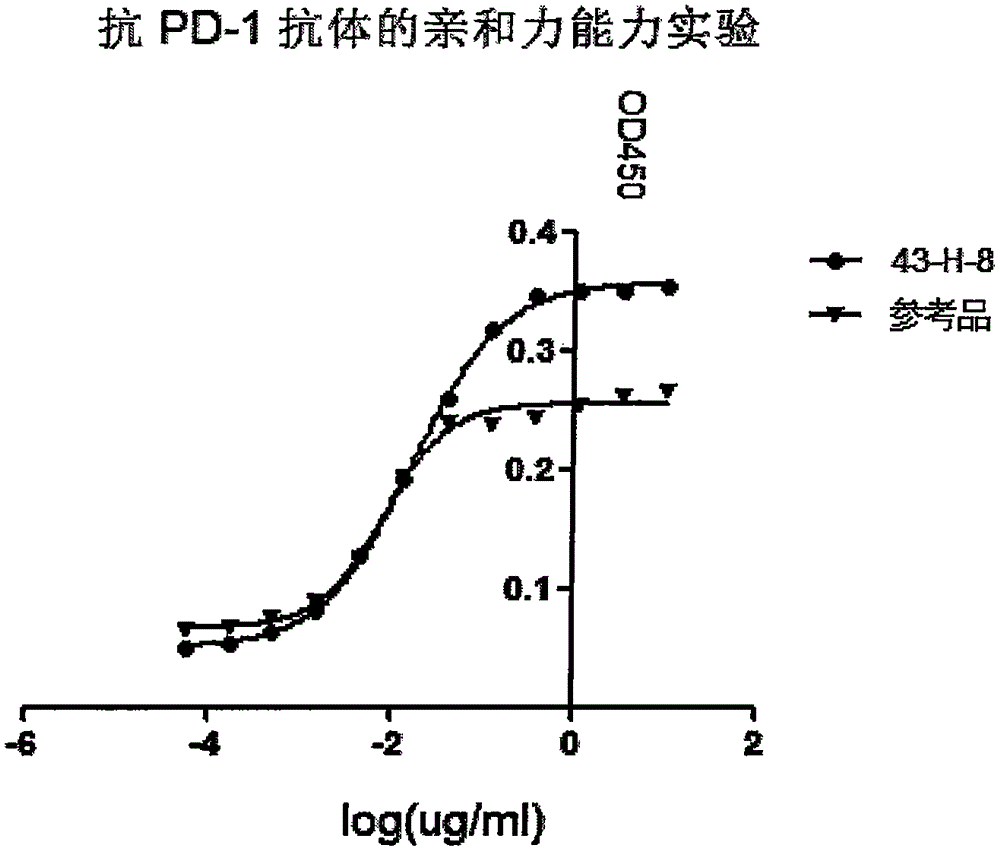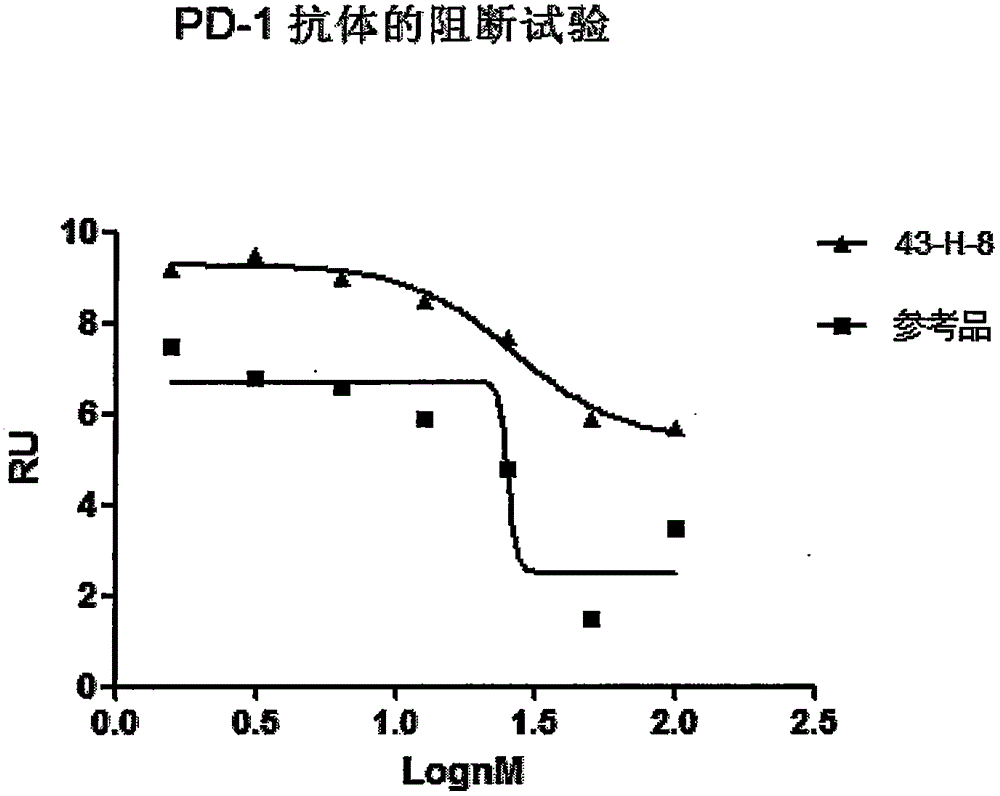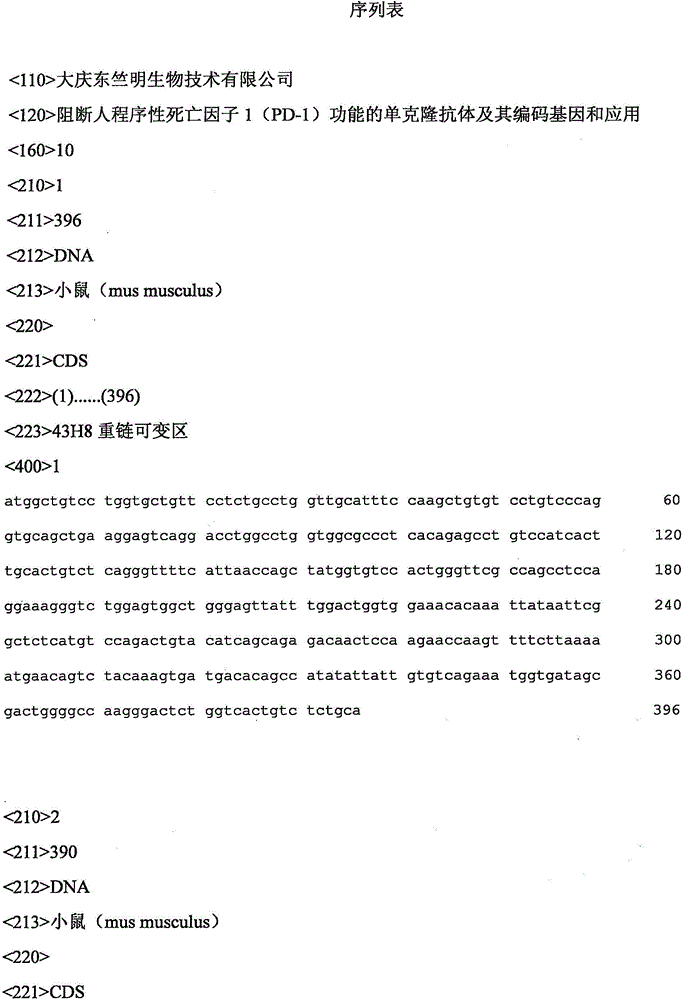Monoclonal antibody with function of blocking human programmed death factors 1 (PD-1), encoding gene of monoclonal antibody and application thereof
A monoclonal antibody, PD-1 technology, applied in application, antibody, genetic engineering and other directions, to achieve the effect of high affinity and broad application prospects
- Summary
- Abstract
- Description
- Claims
- Application Information
AI Technical Summary
Problems solved by technology
Method used
Image
Examples
Embodiment 1
[0025] Stable membrane expression of hPD-1
[0026]In order to obtain a cell line expressing hPD-1 protein on the cell membrane surface as an immunogen. Purchase the cDNA clone encoding the full-length open reading frame of human PD-1 (Beijing Yiqiao Shenzhou Biotechnology Co., Ltd. HG10377-CF, Genbank accession number NM-005018.2), and insert it into pCDNA3.1(+) (invitrogen) In the vector, after sequencing confirms that the coding frame of the hPD-1 gene is correct. The plasmid was electrotransformed into CHO-DG44 cells, pressurized screening, and cloned to obtain CHO-DG44 cells stably expressing hPD-1. Named hPD-1 / DG44.
Embodiment 2
[0028] animal immunity
[0029] Ten A / J mice aged 6-8 weeks were selected and immunized five times with an interval of 14 days between each immunization. 107 hPD-1 / DG44 cells were immunized each time, subcutaneously and intraperitoneally at multiple points. For the first immunization, an equal volume of Freund's complete adjuvant was mixed with cell suspension, and for the remaining 4 immunizations, Freund's incomplete adjuvant was mixed with cell suspension.
[0030] Configuration of cell culture medium
[0031] MD6 serum-free medium was used for culturing sp2 / 0 cells. After fusion, the cells are cultured in HAT medium, and the specific components are as follows: 10% fetal bovine serum and HAT are added to MD6 serum-free medium.
[0032] cell fusion
[0033] Three days after the final immunization, 6 mice with high titers were selected for cell fusion. Aseptically remove the mouse spleen and the pre-prepared sp2 / 0 cells, count the cells, mix them at a ratio of 10:1, and ...
example 3
[0041] Functional identification of anti-hPD1 monoclonal antibody
[0042] Affinity identification
[0043] A 96-well ELISA plate was coated with hPD-L1-Fc (RD); the blocking antibody was diluted 3 times as the primary antibody, and a total of 12 gradients were added to the hPD-L1-Fc-coated 96-well ELISA plate. Add goat anti-mouse IgG-Fc-HRP (SANTCruzBIotechnology) as the secondary antibody, add the chromogenic solution, and read the OD450 value after termination. EC50 concentrations were generated using Graphpad software. The EC50 of this antibody is 1.0665nM, and the EC50 of the positive control is 0.5344nM. It can be seen from the results that the screened antibody has obvious affinity for PD-1, and it is in the same order of magnitude as the positive control. (See figure 1 ).
[0044] Functional Characterization of Antibody Blocking the Binding of hPD-1 and hPD-L1
[0045] A 96-well ELISA plate was coated with hPD-L1-Fc (RD); the purified hPD-1 antibody was diluted 4 ...
PUM
 Login to View More
Login to View More Abstract
Description
Claims
Application Information
 Login to View More
Login to View More - R&D
- Intellectual Property
- Life Sciences
- Materials
- Tech Scout
- Unparalleled Data Quality
- Higher Quality Content
- 60% Fewer Hallucinations
Browse by: Latest US Patents, China's latest patents, Technical Efficacy Thesaurus, Application Domain, Technology Topic, Popular Technical Reports.
© 2025 PatSnap. All rights reserved.Legal|Privacy policy|Modern Slavery Act Transparency Statement|Sitemap|About US| Contact US: help@patsnap.com



